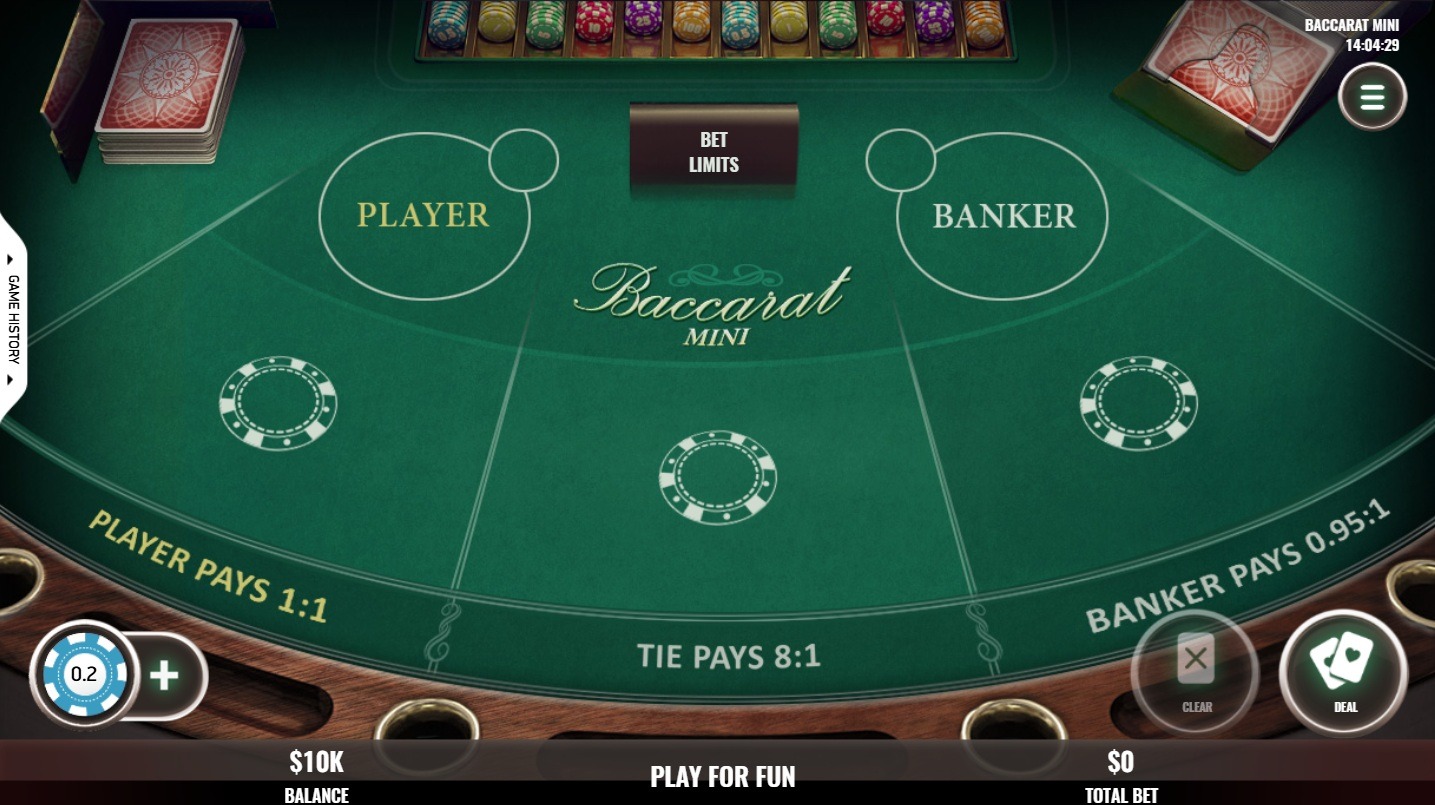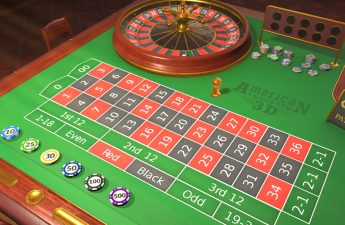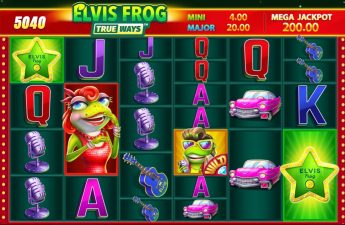To master mini baccarat, you'll need to understand card values, betting odds, bankroll management, and drawing rules. Card totals drop the first digit if over 9, and the highest score is 9. The banker bet has a low 1.06% house edge, making it the best long-term option. Manage your bankroll carefully - set session limits and use fixed-unit betting. Learn when the player and banker must draw a third card. Avoid the high-house-edge tie bet. By grasping these strategic elements, you'll be well on your way to consistently profitable mini baccarat gameplay. There's more to explore when it comes to maximizing your chances.
Understanding Card Values and Point Calculations
To play mini baccarat effectively, you must first understand the card values and point calculations. In mini baccarat, Aces are worth 1 point, while cards 2-9 are worth their face value. However, 10s, Jacks, Queens, and Kings are worth 0 points.
The total value of a hand is calculated by adding the values of the individual cards and taking only the last digit of the sum. The highest possible score is 9, while the lowest is 0, known as a baccarat. If the first two cards dealt to the Player or Banker total more than 9 points, the first digit is dropped to determine the hand value.
Cards: The dealer deals the cards, and each card is worth its assigned value. Understanding these card values and how to calculate the hand total is pivotal for making informed decisions when playing mini baccarat.
Analyzing Banker and Player Betting Odds
When playing Mini Baccarat, you'll find that the Banker bet has a slightly lower house edge of 1.06% compared to the Player bet at 1.24%, making it the mathematically superior option. Over the long run, the Banker hand wins slightly over 50% of the time, contributing to the Banker bet's advantage.
While the Tie bet offers an 8:1 payout, it has an extremely high house edge of 14.36%, making it an unwise choice.
Betting patterns and streaks can impact the short-term results, but the Banker bet remains the best long-term option in Punto Banco. Understanding the statistical probabilities and house edges of the different betting options is essential for making informed decisions when playing Mini Baccarat.
The Banker bet offers the best payout odds and the highest probability of winning in the long run, making it the recommended choice for players seeking to maximize their chances of success.
Effective Bankroll Management Strategies
Prudent bankroll management is key to your success in mini baccarat. Avoid the pitfalls of chasing losses and overly aggressive betting by setting a session limit and splitting your winnings.
Maintaining a sustainable bankroll will safeguard your playing experience and mitigate the inherent risks of this fast-paced game.
Adopt Prudent Bankroll Sizing
Your bankroll is the lifeblood of your mini baccarat experience. Setting a session bankroll limit of 200 units and taking a break if it's lost will help you avoid chasing losses.
If you're winning, split the winnings in half and use only that amount to continue playing, managing your risk effectively. Regular breaks are essential to avoid emotional decision-making that can lead to poor outcomes.
Utilize a fixed-unit betting strategy, such as betting 1-2% of your bankroll per hand, to maintain consistent risk exposure. Understand the house edge on each bet type, whether Player, Banker, or Tie, and size your bets accordingly to optimize the risk-reward ratio.
Mitigate Devastating Losses
Mitigating devastating losses in mini baccarat requires employing effective bankroll management strategies. Players should establish a strict session bankroll limit of no more than 200 units and take a break if it's fully depleted.
When winning, split the winnings in half and use only that amount to continue playing, avoiding the temptation to chase losses. Regular breaks are essential to prevent emotional decision-making, as the game's high decision rate can quickly deplete a player's bankroll.
Utilizing a Banker-only betting system can help minimize the impact of the higher house edge on other bets, such as betting on the Player or a Tie. Proper money management is pivotal in mini baccarat, as the game's fast pace can rapidly consume a player's bankroll if not managed carefully.
Mastering the Third Card Drawing Rules
Understanding the third card drawing rules is vital in mini baccarat. The player hand will draw a card if the total is 0-5, while the banker hand's draw is determined by the player's third card.
Knowing these rules will help you anticipate the final hand values and make informed betting decisions.
Player Hand Drawing Rules
Mastering the Player hand drawing rules is essential for thriving in Mini Baccarat. According to the facts, the Player hand draws a third card if the initial two-card total is between 0 and 5. However, the Player hand stands (no draw) if the initial two-card total is 6 or 7.
Importantly, the Player hand doesn't draw a third card if either the Player or Banker has an initial two-card total of 8 or 9 (a "natural"). Pivotally, the Player hand drawing rules remain the same regardless of the Banker hand's total.
Understanding these rules is crucial for making informed betting decisions in Mini Baccarat. By comprehending when the Player hand will draw a third card, you can anticipate the potential outcomes and make more strategic wagers. Mastering the Player hand drawing rules is a fundamental step in becoming a successful Mini Baccarat player.
Banker Hand Drawing Rules
While the Player hand drawing rules are essential, you must also master the Banker hand drawing rules to excel at Mini Baccarat. The Banker's third card drawing rules are pivotal, as they determine when the Banker hand must draw a card or stand.
If the Banker's total is 0-5, it must draw a third card, but it must stand if the total is 6-7. The Banker's decision to draw or stand is also influenced by the Player's third card. If the Player's third card is 2-7, the Banker must draw a third card regardless of its current total. Conversely, if the Player's third card is 0, 1, 8, or 9, the Banker must stand with a total of 6-7 and draw with a total of 0-5.
Understanding these Banker hand drawing rules will help you make informed decisions when betting on the Banker hand, increasing your chances of success in the Mini Baccarat game.
Navigating Tie Outcomes Profitably
Tie outcomes in Mini Baccarat can be tricky to navigate, but by adhering to a few key principles, you can optimize your gameplay and minimize the impact of this high-house-edge bet. First and foremost, remember that the Tie bet carries a staggering house edge of around 14.4%, so it's a bet you should avoid at all costs.
When a Tie occurs, it's best to treat it as if the hand didn't happen and simply continue with the established Player/Banker betting sequence. Tie bets don't impact the overall game progression, so you can safely ignore them when developing your betting strategy. Chasing Tie bets is a losing proposition in the long run due to the exorbitant house advantage associated with this outcome.
Instead, focus on betting the Banker and Player hands, as they've markedly better odds compared to the Tie bet. By following this approach, you'll minimize the commission you pay and optimize your chances of winning in Mini Baccarat.
Evaluating Mini Baccarat Versus Standard Baccarat
When comparing Mini Baccarat to its standard counterpart, several key distinctions emerge that may sway your preference. With a faster pace of 150-200 decisions per hour, Mini Baccarat offers a more dynamic and engaging experience for players. Additionally, the lower table minimums make it more accessible for casual bettors, allowing you to try your hand at the game without a significant financial commitment.
The house edge on the Banker bet is slightly lower in Mini Baccarat at 1.06%, compared to 1.17% in standard Baccarat, potentially leading to better long-term returns.
The reduced number of players and smaller table layout in Mini Baccarat create a more intimate and personalized gaming environment, fostering a sense of connection with the dealer and other players.
For new players, the fewer decision points in Mini Baccarat can make it easier to learn the rules and actively participate in the game, allowing you to become comfortable with the mechanics of Baccarat more quickly.
Frequently Asked Questions
How to Consistently Win in Baccarat?
To consistently win at Baccarat, apply bankroll management techniques, use probability-based betting, track the cards, and leverage advantage play principles. Mitigate the house edge and reduce variance through game theory ideal play.
Is Mini Baccarat Worth It?
Mini Baccarat's lower house edge can be appealing, but its faster pace requires disciplined bankroll management. Bet on the Banker hand, analyze probabilities, and understand game mechanics to maximize your chances, but always play responsibly within your limits.
What Is the Most Profitable Strategy in Baccarat?
To maximize profits in baccarat, focus on house edge reduction by understanding player and banker bet advantages, avoiding tie bets, and utilizing edge prediction techniques. Bankroll management, table etiquette, and selecting the right live dealer or online platform are also essential.
What Is the 3 8 Rule in Baccarat?
The 3 8 rule in baccarat requires the Banker to draw a third card when their initial hand is 3 and the Player's third card is an 8, regardless of the Banker's total. Understanding this rule can inform your quick decision-making and risk management strategies.
Заключение
Mastering mini baccarat requires a deep understanding of card values, betting odds, and bankroll management. Applying the third card drawing rules and maneuvering tie outcomes can maximize your chances of profitability. While mini baccarat shares similarities with standard baccarat, the distinct gameplay and payouts demand a tailored strategy to succeed in this thrilling casino game. For a seamless and anonymous gaming experience, Bitcoin casino Wolfbet provides the perfect platform to enjoy mini baccarat with fast crypto transactions.




